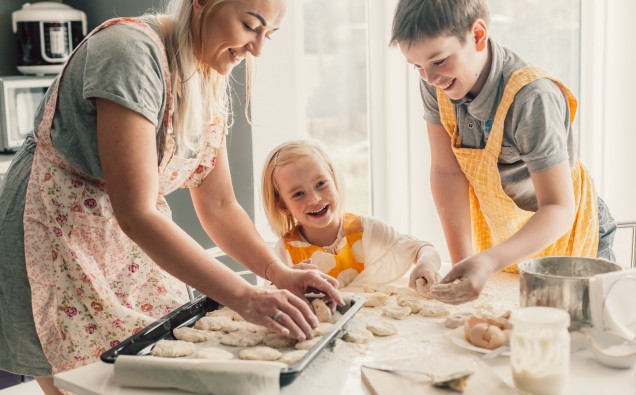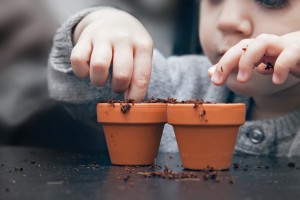Until we are certain when schools will re-open, parents of young children are trying to work out the best way to cope. If your children are at home and you’re concerned that they keep up with their school work, education expert and former primary school teacher Becky Cranham of PlanBee has some great ways to embed learning in fun activities
What’s cooking?
Baking provides a wealth of learning opportunities – and produces delicious results! Working through a simple recipe with your child will help develop measuring skills (Maths), following instructions (English) and can help them understand reversible and irreversible changes (Science).
Top tip: Ask your child questions as you work through the recipe, such as, ‘What do we need to do next?’, ‘How does our mixture look different now to before we added the flour/butter/sugar?’
Nurture nature
Planting seeds and watching them grow is always rewarding. Plus you don’t need a garden. Pop some multi-purpose compost in a plant pot, plastic cup or old yogurt pot, sprinkle the seeds in and cover with compost. Encourage your child to take responsibility for making sure the plant has enough water and sunlight, and challenge them to record what happens each day.
Top tip: Fast growers include mung beans (2-5 days), cress (3-7 days), lima beans (4-7), sprouting seeds (4-12), radishes (7-14), pumpkin (7-21) and nasturtium (14-21). Lettuce, basil, chives, mint and parsley are also relatively easy to grow.
Make them an expert
Are they crazy about LEGO? Challenge them to find out when it was invented, by who and how it became so popular. Do they love singing and dancing? Challenge them to write and perform their own songs, or even create a music video. Crazy about science? Challenge them to put together a demonstration or presentation about their favourite scientist.
Top tip: Give your child the role of the ‘teacher’. If they feel like experts in a particular field showing off their knowledge to others, it’s more likely to keep them on track.
Keep them moving
YouTube is an endless source of great exercise and dance videos for young children:
Dance ‘n Beats for fun dance routines
Just Dance more challenging videos for older children
Cosmic Kids Yoga tie them in knots!
Jump Start Jonny free high-energy workout
Top tip: Make sure children warm up and warm down before and after each workout session.
Code with confidence
This is much easier than it may sound. One of our favourites is Scratch. Children can program their own interactive stories, games and animations while learning a bunch of key skills along the way.
Top tip: The main Scratch site is designed for children aged 8-16, but there is an easier version called ScratchJr for 5-to-7s.
Telling a story
Ask children to pick a main character, a setting and a special object and let their imaginations run riot! To present them to the world too, they could stick with the good old traditional pen and paper or try creating an eBook. Book Creator is a great free app.
Keep reading
Check out Epic, which has access to 35,000 children’s books, learning videos, quizzes and more. You can try it free for 30 days. Encourage your child to act out the finished story or create a puppet show.
Top tip: Ask them about what they have read. Use a free Reading Question Matrix .
Getting creative
Here are our top fuss-free art activities that don’t require much equipment (or mess!)
- Rock painting: grab some small rocks or pebbles next time you go out for a walk and paint them as animals to create pet rocks!
- Photo cut-outs: Print off any picture and cut it in half using zigzag lines. Stick one onto a plain sheet of paper and challenge your child to complete the picture
- Copy the old masters – or ‘modern’ ones such as Piet Mondrian or Kandinsky
- Still life: plop an apple, a vase, a glass or a flower in front of them and ask your child to draw what they see
- Squiggle art: use curvy or straight lines. Challenge your child to turn it into a drawing
Top tip: For additional arty inspiration, Pinterest is an excellent port of call.
Visit PlanBee for great free resources and lesson plans to use at home.
Becky Cranham is an education expert and former primary school teacher. She is a director of PlanBee.


















